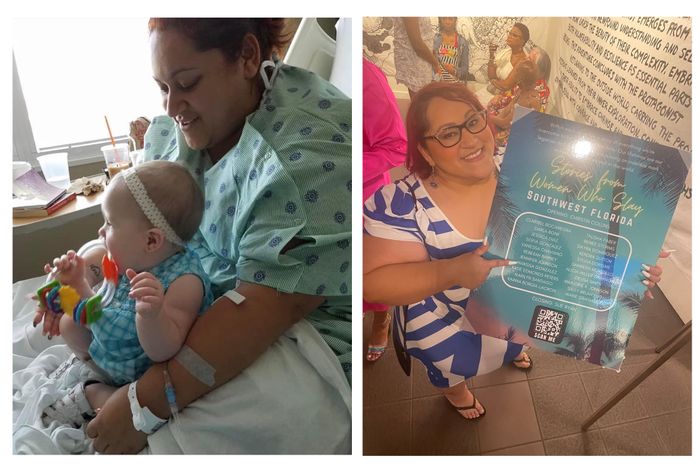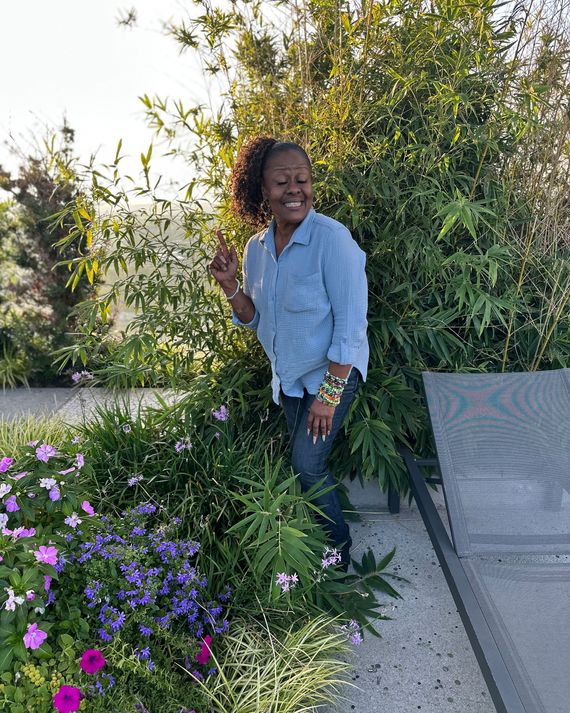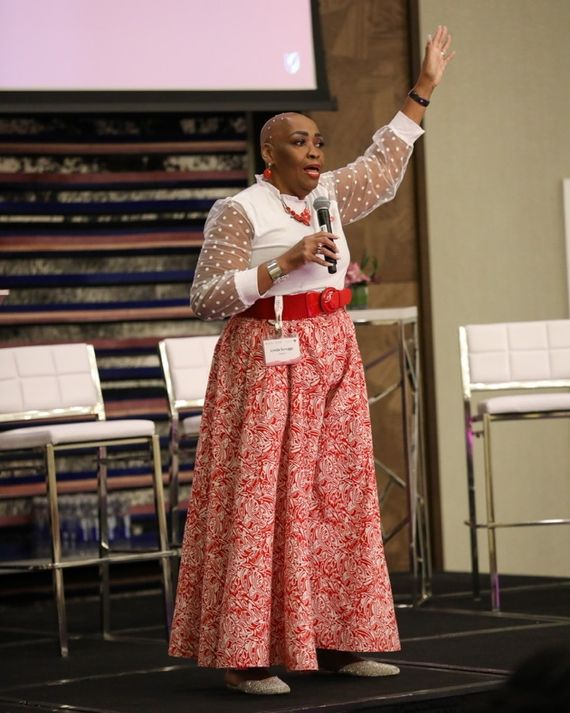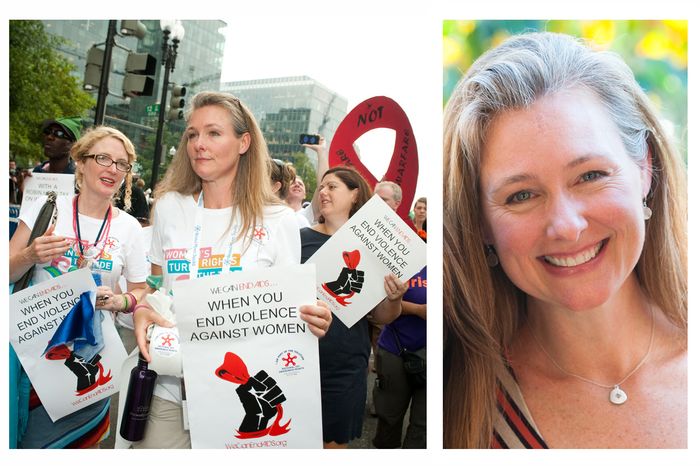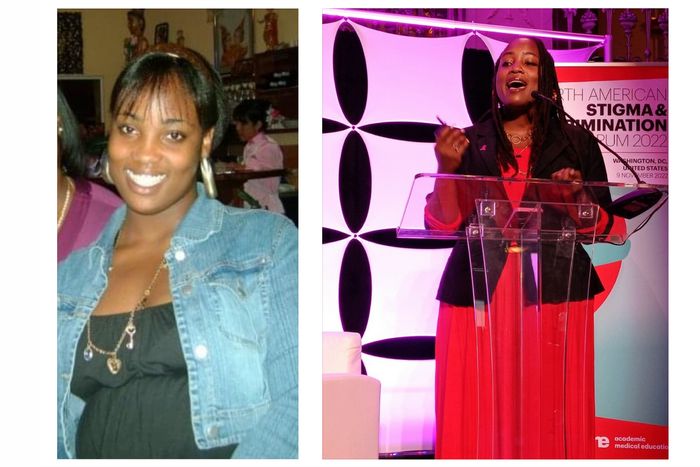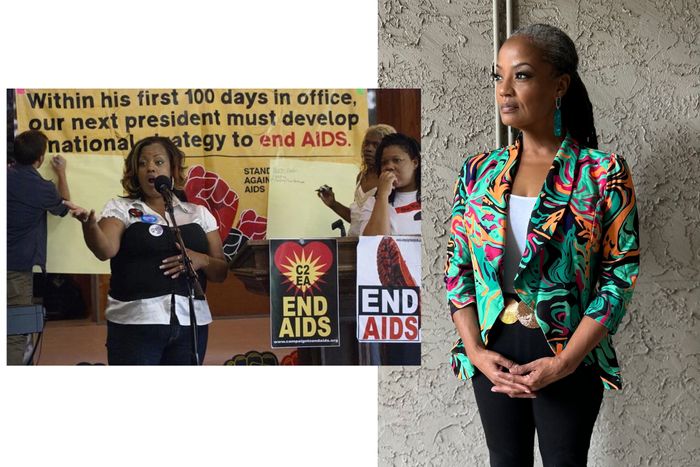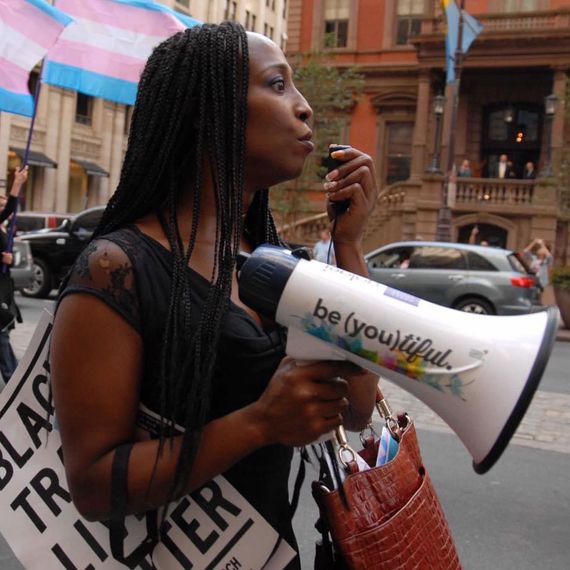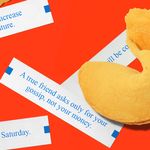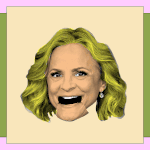
After a raucous rendition of “Holiday” on Madonna’s current Celebration tour, one of her dancers collapses. She covers him with a sheet, then launches into a thoughtful rendition of “Live to Tell,” rising above the audience in a makeshift frame, honoring those who fell to AIDS with a moving tribute created in partnership with the AIDS Memorial. Portraits of the fallen, including her friend Martin Burgoyne, Sylvester, Keith Haring, and a sprinkle of women including Cookie Mueller, unfurl on enormous screens. As the song progresses, the images multiply, yearbook-style, depicting the sheer volume of people lost to the epidemic.
In recent years, celebrities like Jonathan Van Ness and Billy Porter have disclosed their status, yet what we see about women with HIV-AIDS in the media landscape is sorely lacking. Globally, women and girls make up more than half of the 37.7 million people living with HIV, acquiring the disease at a higher rate than men. Annual HIV infections in the U.S. remain stable, but new infections disproportionately affect Black women at 11 times that of white women, and four times that of Latinx women. Trans women have 49 times the odds of having HIV compared to the general population in the U.S.
As someone who came of age during the height of the AIDS crisis, I knew enough about AIDS to be terrified of unprotected sex, but doctors didn’t consider me to be at risk; the HIV-positive friends I have and lost to AIDS were gay men. Sarah Schulman, activist and author of Let The Record Show: A Political History of ACT UP New York 1987–1993, told me, “Women were only seen as vectors of infection at first, to children and later, to men.” Many of these women, she adds, were often low-income people of color who died very quickly. “They got diagnosed much later because they were either poor and had worse health care or they were taking care of everybody else and didn’t get to take care of themselves.”
With tremendous advancements, HIV-AIDS is now considered a chronic disease, but research and messaging still largely exclude women. You can’t watch a Real Housewives episode without seeing countless ads for HIV treatment meds, like Cabenuva and Biktarvy, which include women in their narratives, but despite recent CDC literature claiming “PrEP (Pre-Exposure Prophylaxis) Is for Women,” those ads are still focused on gay male and trans female–male couples. This exclusion throughout systems has driven many positive women to activism. But ending AIDS by 2030 seems out of reach as 1.3 million people were newly infected in 2022, and it will likely remain that way.
On the 35th anniversary of World AIDS Day, eight thriving HIV-AIDS survivors and activists diagnosed between the 1980s and 2000s lend some perspective to living with the disease long-term; among them six Black women (one trans), and two white women, share their experiences with health care and stigma.
Nancy Duncan, 66, Long Island, New York
Diagnosed: 1990, age 33
On her diagnosis: I contracted HIV through unprotected sex with a man I dated after my marriage ended, in 1985. He didn’t know he was positive. I felt very scared and alone and didn’t know anyone else living with HIV. I went to an AIDS-designated hospital for treatment in my county and didn’t like the way I was treated there. It wasn’t until I started attending an HIV support group and meeting other people in my situation who told me about a better clinic. Now I’ve had the same HIV doctor for around 30 years. There was no internet so I had to rely on books and networking with other people to acquire information.
On her path to activism: I’ve done a few actions with ACT UP NY and Planned Parenthood, whom I worked with for many years. I have done many legislative visits through AIDS Watch in Washington, D.C., and on a local level as well. I became public with my HIV status in 1999 when I started sharing my story in schools all over my county. I felt as though I was helping others not to get HIV. Several magazines did my story with photos. I also did the New York State Department of Health “HIV Stops With Me” spokesmodel campaign for three years and had my face on billboards for HIV awareness and stigma prevention. My son, family members, and friends are all supportive and proud of me.
Marissa Gonzalez, 34, Lehigh Acres, Florida
Diagnosed: 2016, age 26
On health care: At one point this clinic was like home and it’s sad to see how much their focus on patients has changed. Over the course of 12 months, I’ve seen three different doctors. In my area, a large health-care system no longer offers HIV care, and, quite honestly, the ones I’ve been to have been lacking. I emailed their Medical Director in August but have had no response. Yesterday, I called for a sick visit and still have not received a call. Providers don’t listen to their patients. Treatment options often aren’t discussed as a collaborative effort to determine what’s best for the individual and their lifestyle. Staff can be judgmental and rude, which is harmful in a space that is meant to feel safe.
On stigma: I had been bullied all my life; the very reason I attempted suicide is ultimately the reason I chose to be public, so HIV couldn’t be used as a weapon against me. I volunteered for a local youth group and hosted an event for teen girls on HIV-AIDS Awareness Day and a woman who was born positive said, “What would you know about living with HIV?” From that moment, I knew I couldn’t be silent anymore. I shared a status on Facebook outing myself and was met with a lot of sympathy and support. Until HIV is talked about in extended sexual health curriculums in schools, more focus is put on HIV in medical school, and conversations, testing, and treatment are normalized among families and partners, there is still a very long way to go.
Michelle Lopez, 56, Brooklyn, New York
Diagnosed: 1991, age 24
On her diagnosis: I acquired HIV through unprotected sex with my daughter’s father in 1989. He never told me. I disclosed that his daughter and I tested positive and he should get tested. He said: “Ain’t life a bitch. I have been dealing with this a long time!” When I was diagnosed, I was undocumented and living with a man who was beating the shit out of me because he promised he was going to marry me and get me my green card. This one night was the worst beating, but it was the best because I left. I got on the train in Queens at night and just switched until morning, ending up in Brooklyn. I saw an ad on the train and I swear, it spoke to me. I got off the train, called the ad, and broke down. This lady said, “Where are you right now?” I’m standing at the corner of Flatbush Avenue and Nevins Street. Right away the woman said, “Miss, I want you to turn around where you’re standing and I want you to walk into Nevins Street facing west. You’re going to find me.” They were five blocks from where I was standing.
On her path to activism: I was involved with ACT UP NY. Women needed to be able to get into clinical trials so at least some of us could die at least getting some kind of care and benefits. In 1996, Oprah Winfrey did a show on my life. It was not an AIDS-related show. It was called “Best Friends” — I put mine in a living will to parent my kids, because back then they were telling us you’re going to die. After receiving legal status, I worked in public health as a peer, doing outreach work and referring people to be tested. Right now I work as a consultant for Einstein Rockefeller CUNY Center for AIDS Research and sit on different committees to do research, looking at the impact of HIV and AIDS. I became a treatment advocate all the way to Washington, D.C. as a member of the NIH AIDS Clinical Trials Group Community Consistency Group. We created an educational module called U=U, undetectable equals untransmittable. Our module literally teaches providers how to meet us where we’re at — we’re giving them a definition of what U=U means to us.
Linda H. Scruggs, 58, District Heights, Maryland
Diagnosed: 1990, age 25
On her diagnosis: I had just moved to Baltimore when I found myself pregnant. I was at Johns Hopkins; normally, I would have gone to the private clinic but because I was in a public clinic, I was offered an HIV test because there was funding. At 13 weeks, I was asked to come back and was diagnosed. I understood HIV was a sexually transmitted disease but didn’t know anyone heterosexual who tested positive except for one person who was an IV drug user. We were told back then it was a gay man’s or sex worker’s disease. I wasn’t promiscuous. I was 18 months into drug recovery from cocaine and things like that.
I remember being mad that the woman who gave me my test was not the person who gave my diagnosis — she was a really nice young Black woman. Instead, I had three white men who I had never seen before give me the worst news in the world. It was extremely cold. Their option for me was to have an abortion that day, at 4:15 in the afternoon, and I’d have five years. My other option was to have the baby and both of us would be dead in less than three years. When they left the room, the case manager, a woman, told me to remember my faith. I left the clinic. The first thing I did was try to commit suicide. I was tired.
On her path to activism: There was a little girl in the clinic, Brianna, who was HIV-positive. She was crying because she was five and they had just explained to Brianna that she couldn’t go to school. I never heard of Ryan White. It made no sense. Long story short, we worked with this one school for about two months and Brianna went to school. Her experience gave me a voice. I started working at the same clinic I was diagnosed in for nine years. I worked at the Moore Clinic at Hopkins. My activism is about treating people with respect. There are so many factors that create reasons for women to find themselves vulnerable to HIV. Now, I’m the co–executive director of Ribbon, a nonprofit technical assistance and training center providing technical assistance and capacity building to organizations and health systems that serve people with chronic diseases.
Dawn Averitt, 54, Strafford, Vermont
Diagnosed: 1988, age 19
On her diagnosis: I went to NYU: Three guys in my dorm had AIDS and I was the one who was bringing them soup. Right after I turned 19, I was going to take some time off to model in Spain. A week after I arrived in Madrid, I was raped. Seven weeks later, I ended up in a Spanish hospital with high fevers and golf ball–size lymph nodes. It was 1988: I only had a couple of previous sexual partners, so nobody even considered testing me. My mom ran an OB/GYN unit, so she took me to a series of doctors. I asked for an HIV test. I hadn’t told anyone about the rape. I came home, got tested, and it came back positive. I look at the doctor and ask, “Where do I find more information? What do I do? What do I read?” He says, “Don’t read anything, it’s too confusing, and don’t tell anyone because this can ruin your family’s life.” My dad’s going to lose his job. My family is going to lose their insurance. My brothers are going to get kicked out of the high school.
On her path to activism: I was working for a very high-profile senator and was on the receiving end of ACT UP and Queer Nation coming to the senator’s office shaking fake vials of blood. Nobody knew my status. I decided to move back to Atlanta; it was the perfect moment to take what I had learned in government and use it on behalf of people in the community. One of the few people I confided in was a friend who was a receptionist for a grassroots AIDS service. I crammed and then marched into this interview with five gay white men in jeans and T-shirts, all looking at me like, What the hell are you doing here? I said I was HIV-positive and started spewing out what I’d memorized. One of my dearest and closest friends was on that panel and he said, “I either thought you’re a pathological liar or we’ve hit a gold mine.” In ’99 I was on the NIH panels, an FDA panel, and planning conferences; I felt if I didn’t show up there wouldn’t be a woman’s voice at the table and was completely fried. I took eight months off and hiked the entire Appalachian Trail when I had the idea to develop a place where HIV-positive women, care providers, researchers, clinicians, and everyone on the spectrum of engagement around HIV disease in women could go to get reliably vetted information that was conversational and accessible.
Ciarra Covin, 35, Philadelphia, Pennsylvania
Diagnosed: 2008, age 20
On stigma: I was diagnosed in a very small rural town. Folks talk. The woman behind the desk [at the clinic where she was diagnosed], her daughter, and I were in marching band together, so I felt like she and everyone else in school would know, so I just jumped out in front of that. I did not want to have to live in a box. The stigma I experience today would’ve never been on my radar: Who thinks about the stigma of having children and deciding whether or not to breastfeed with HIV, or the dating aspect of it, or will my aging with HIV look different than someone else aging with HIV? You would’ve never been able to put that out on paper for me at the beginning of this diagnosis — it’s all been lived.
On her path to activism: It’s a very lonely world when you feel like you’re the only one with HIV. I was doing local community activism, talking to my inner circles about protection. I would disclose my status hoping that someone would disclose back, but I never got that response. It wasn’t until 2019 that I found a community of women living with this at the Well Project. My journey to this has been unique: My journey started as a blogger, then I got invited to the community advisory board. I became program coordinator and now I’m program manager. I feel like my voice is so valued. The leadership listens to the issues faced by the people most impacted by this virus. The financial independence I’ve gained, the community I’ve found — I was able to breastfeed my second baby, who is 2. Alongside the Well Project and other organizations, we got federal policy changed so now a parent living with HIV should be supported, for the first time ever, in breastfeeding.
Michelle Anderson, 53, Dallas, Texas
Diagnosed: 1999, age 29
On stigma: The biggest challenge I faced early on was implicit and explicit biases from my treating physicians. In 2007, I went to my first doctor’s appointment. I hadn’t taken any medication. I didn’t know what the medication did to my body. This doctor comes in. He is an Indian male. He says, “I read your charts, saw your blood work, you have AIDS. I need to see you in six weeks here, go make your appointment.” No exam, nothing. They had to send somebody in there to calm me down and I’m friends with her to this day. Eventually, I got another doctor and I’ve been good ever since.
Everybody’s talking about getting to zero [new HIV transmissions], but for that to work, we have to say it to Black women. Stigma is the biggest barrier, but the undercurrent of stigma is systemic racism. We know that stigma has been created around HIV because we also know that another undercurrent of HIV is white capitalism. I believe HIV could be cured if it was not tied up in this billion-dollar business when we talk about pharma and how systems of oppression prey on different classes of people in order for other people to benefit.
Tiommi Luckett, 46, Little Rock, Arkansas
Diagnosed: 2012, age 35
On stigma: If the stigma wasn’t as heartfelt as it is, my ex-partner would still be alive today. He succumbed to late-stage HIV-related complications because he was embarrassed and lived until his dying day in denial of his status. He was also unstably housed, so he couldn’t store his medicine safely.
On health care: I contracted HIV from a former partner. In the beginning, I constantly thought about dying and what would be said about me. At first, I was discouraged by the price, thousands of dollars for a 30-day supply of antiretroviral (ART). I contacted different community-based organizations and was given the contact information for ARcare, the Ryan White service provider that covers the cost of medications, doctor visits, mental health therapy, and dentistry. I got into care through a study for a new HIV medication and became undetectable.
When I moved from Arkansas to Michigan, my needs were met from the moment I walked into the office: I had access to a nurse practitioner, an insurance agent, a dietician, a therapist, and a medical case manager. I left Detroit later for Philadelphia and found no lapse in care. As a Black trans woman, access is increasingly becoming difficult with the onslaught of legislation banning trans–affirming health care. HIV health care access is being threatened by Congress trying to cut funding. People will face not having access to lifesaving medication and services because bodily autonomy is being attacked through legislation targeting abortion access to deny services to already marginalized communities.



